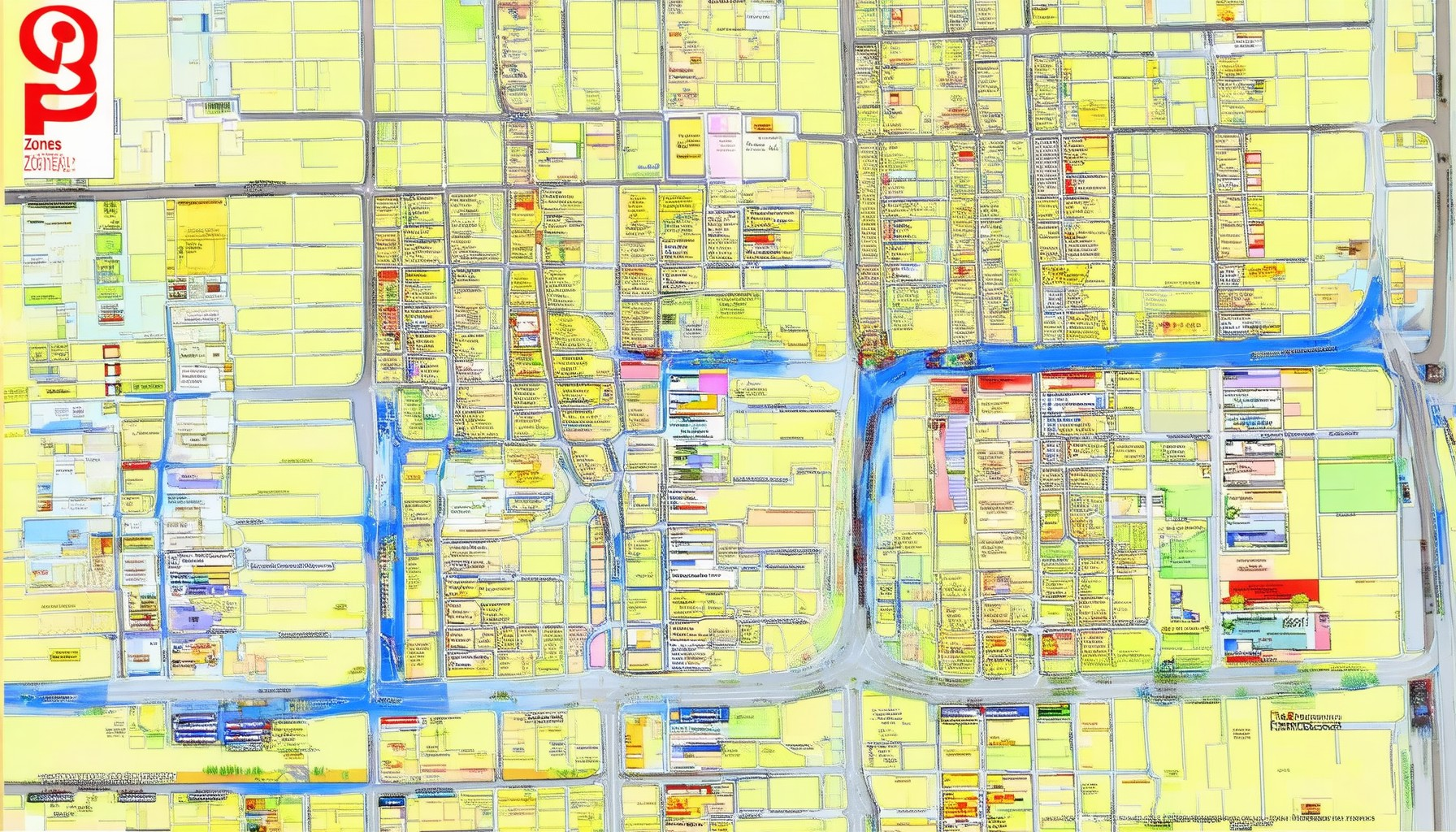Understanding the dynamics of high-demand property zones is crucial for anyone looking to navigate the ever-evolving real estate market. These zones, often influenced by zoning regulations, play a pivotal role in determining which areas are primed for growth, offering both investment potential and unique challenges. Whether you’re an investor seeking high returns or a homeowner aiming to maximize your property’s value, grasping the nuances of zoning types and their market implications is essential. This guide delves into the four primary types of zoning, explores the impact of high-demand areas on real estate investments, and examines how zoning influences property values and housing affordability. By dissecting these factors, we aim to provide a comprehensive overview that empowers readers to make informed decisions in one of the most dynamic markets today.
Key Takeaways
– Understanding R4 Zoning in California:
– Focuses on medium-density residential properties, ideal for multi-family housing like apartment buildings or condos.
– Features larger lot sizes and stricter design guidelines, including parking and green space requirements.
– May have subtypes like R4-A or R4-B, varying by local regulations.
- R5 Zoning in California:
- Supports medium-high density, allowing townhouses, mid-rise apartments, and mixed-use developments.
- Smaller lot sizes (3,000–10,000 sq. ft.) with moderate to high housing density.
- Ideal for urban areas, balancing residential and commercial uses.
- R2 vs. R3 Zoning:
- R2: Low-density, single-family homes on larger lots (10,000–20,000 sq. ft.), suitable for quiet suburban living.
- R3: Medium-density, accommodating townhouses, small apartments, and mixed-use developments on smaller lots (5,000–10,000 sq. ft.).
- Zoning Implications:
- Shapes neighborhood character, controls land use, and influences property values.
- R2 and R3 zones balance urban growth with community livability and sustainability.

What Are the Four Types of Zoning?
Zoning is a method of land use regulation that divides a city into distinct areas for different purposes. Here are the primary types of zoning:
- Residential Zoning: Designed for housing, this type includes single-family homes, townhouses, and apartment buildings. Examples: Suburban neighborhoods, gated communities.
- Commercial Zoning: Intended for businesses, this category covers retail stores, offices, and public facilities. Examples: Downtown areas, shopping malls.
- Industrial Zoning: Meant for heavy manufacturing and production activities, this type includes factories and warehouses. Examples: Industrial parks, logistics centers.
- Mixed-Use Zoning: Allows a combination of residential, commercial, and sometimes industrial uses within a single area. Examples: Urban renewal projects, mixed-income neighborhoods.
- Special Districts: Reserved for specific purposes like cultural, recreational, or educational uses. Examples: Stadiums, museums, universities.
Zoning ensures that land uses are compatible and promotes sustainable development. It helps maintain community character and protects public welfare by regulating land uses according to local needs.
For more details on how zoning impacts real estate locations, explore our comprehensive guide .
Understanding Property Market Conditions
When property demand exceeds supply, the market shifts in favor of buyers, creating a buyer’s market. This dynamic offers several advantages for those looking to purchase property.
Key Characteristics of a Buyer’s Market
- High Demand: More buyers are actively seeking properties than there are available listings.
- Low Supply: The number of homes for sale is insufficient to meet buyer demand.
- Competitive Pricing: Buyers often find properties at lower prices due to increased competition among buyers.
- Bargaining Power: Buyers can negotiate better terms and conditions with sellers.
Economic Factors Influencing a Buyer’s Market
- Interest Rates: Low interest rates make purchasing more affordable, driving up demand.
- Economic Stability: Uncertainty among sellers can reduce supply, shifting the market dynamics.
Examples of Buyer’s Markets
Cities with strong job markets and desirable neighborhoods often experience high demand. Regions with affordable housing compared to other areas can attract numerous buyers, creating a competitive environment.
Advantages for Buyers
- Negotiation Flexibility: Buyers can often secure better deals and terms.
- Plenty of Options: With high demand, buyers have more choices and can wait for the perfect opportunity.
- Stabilized Prices: While prices may not necessarily drop, they are likely to remain stable or increase minimally.
Strategic Considerations for Buyers
Having a well-prepared strategy and working with a knowledgeable real estate agent can help buyers navigate the competitive landscape effectively.
Conclusion
A buyer’s market provides a favorable environment for buyers, offering more options and potentially better pricing. Understanding the local market dynamics and leveraging expert advice can enhance the purchasing experience.

Types of Zones in a House
The concept of zoning in a house refers to categorizing different areas based on their intended use. Here are the three primary types of zones commonly found in residential properties:
- Single-Family Zone :
This type of zone is reserved for standalone houses or individual units where the property is occupied by a single family. Features typically include private yards, gardens, and separate living spaces designed for a single household. - Multi-Family Zone :
As the name suggests, this zone is meant for buildings that house multiple families or units. Examples include apartment complexes, townhouses, or duplexes where shared facilities like laundry rooms or parking areas are common. - Mixed-Use Zone :
In this zone, a property may combine residential, commercial, and recreational spaces. For instance, a house might have an attached store, a workshop, or a guesthouse, allowing for diverse uses under one roof.
These zones help regulate land use, ensure safety, and promote community planning by separating different activities and uses within a property.

Understanding R4 Zoning in California
R4 zoning in California is a classification used to regulate land use, primarily focusing on medium-density residential properties. This zone typically allows for the construction of multi-family housing, such as apartment buildings or condominiums, while imposing certain restrictions on lot size, height, and density compared to R3 zones, which are usually reserved for townhouse or paired-home developments.
Key characteristics of R4 zoning include:
- Multi-Family Housing : R4 zones are generally intended for properties that can accommodate multiple residential units, such as duplexes, triplexes, or larger apartment complexes.
- Lot Size and Density : Lots in R4 zones are typically larger than those in R3 zones, allowing for higher density housing without overcrowding.
- Design Standards : Developments in R4 zones may face stricter design guidelines, including parking requirements, green space specifications, and building height limitations.
- Variations : Some cities and counties within California may further categorize R4 zones with subtypes, such as R4-A or R4-B, each with distinct regulations tailored to local needs.
- Impact on Development : Homebuilders and developers should consult local zoning codes to understand specific requirements and limitations when working within R4 zones.
Considerations for Homeowners and Developers
- Zoning Laws : Understanding the specific regulations for R4 zones in your area is crucial for compliance and successful development.
- Mixed-Use Potential : In some cases, R4 zones may allow for mixed-use developments, combining residential and commercial spaces.
- Local Variations : Zoning classifications can vary significantly between cities and counties, so it’s essential to research local ordinances.
By understanding these aspects, homeowners and developers can navigate the complexities of R4 zoning and make informed decisions about land use and property development.
What is R5 Zoning in California?
R5 zoning refers to the Medium-High Density Multiple-Family Residential District in California. This type of zoning is designed to accommodate a mix of residential and commercial activities, typically found in urban or densely populated areas. The R5 designation allows for a variety of housing options, including townhouses, mid-rise apartment buildings, and other multi-family structures.
Key Characteristics of R5 Zoning:
- Housing Types : R5 zones generally permit a range of multi-family housing options, such as:
- Townhouses
- Mid-rise apartment buildings
- Small condominium developments
- Mixed-use buildings with residential and commercial spaces
- Density Requirements : The density varies depending on the specific jurisdiction, but it is typically moderate to high, allowing for a substantial number of housing units per acre.
- Allowed Uses : Commonly permitted uses in R5 zones include:
- Residential properties
- Limited commercial spaces (e.g., small retail outlets or services)
- Parking facilities
- Public amenities like parks or recreational areas
- Lot Sizes and Setbacks : Lots in R5 zones are usually smaller compared to single-family neighborhoods, with typical lot sizes ranging from 3,000 to 10,000 square feet. Setbacks (the distance between buildings and streets) are often specified to ensure adequate spacing and safety.
Importance of R5 Zoning:
- Urban Development : R5 zones play a crucial role in supporting urban growth by providing spaces for multi-family housing, which is essential for addressing housing shortages in many cities.
- Investment Potential : These zones are often sought after by real estate investors due to their potential for generating rental income or selling to developer clients looking to construct multi-family projects.
For more detailed information on R5 zoning and its implications for real estate investments, explore our comprehensive guide on Understanding California Zoning Laws . Compare it with insights from competitors like Zillow and Trulia to gain a well-rounded perspective on the subject.

Understanding R2 and R3 Zoning
R2 and R3 zoning refer to specific land use designations typically used in urban and suburban planning to regulate property development and land use.
What is R2 Zoning?
- Definition: R2 zoning is reserved for low-density residential areas.
- Housing Types: Single-family homes, detached houses, and small lot subdivisions.
- Lot Sizes: Typically ranges between 10,000 to 20,000 square feet.
- Allowed Structures: Single-story homes, duplexes (if allowed), and small apartment buildings (up to 3 stories).
- Purpose: To preserve open spaces and promote a quiet, suburban lifestyle while allowing limited density.
What is R3 Zoning?
- Definition: R3 zoning is designated for medium-density residential areas.
- Housing Types: Townhouses, stacked townhomes, and small apartment buildings (up to 4 stories in some cases).
- Lot Sizes: Smaller lots, often between 5,000 to 10,000 square feet.
- Allowed Structures: Multi-family dwellings, mixed-use developments, and commercial spaces (subject to local regulations).
- Purpose: To accommodate a higher population density while maintaining a compact, walkable community layout.
Key Differences Between R2 and R3 Zoning
| Aspect | R2 Zoning | R3 Zoning |
|---|---|---|
| Housing Density | Low | Medium |
| Housing Types | Single-family homes | Townhouses, apartments |
| Lot Size | Larger | Smaller |
| Allowed Structures | Detached homes, duplexes | Multi-family buildings, mixed-use |
Implications of Zoning Laws
Zoning regulations play a crucial role in shaping the character of neighborhoods, controlling land use, and influencing property values. Understanding the difference between R2 and R3 zoning helps homeowners, developers, and investors make informed decisions about purchasing properties and planning future projects.
Conclusion
R2 and R3 zoning are essential components of land use management in many cities and towns. While R2 focuses on low-density living, R3 supports medium-density developments, contributing to a balanced urban environment. Both zoning types aim to enhance community livability and sustainability through thoughtful land use planning.




0 Comments